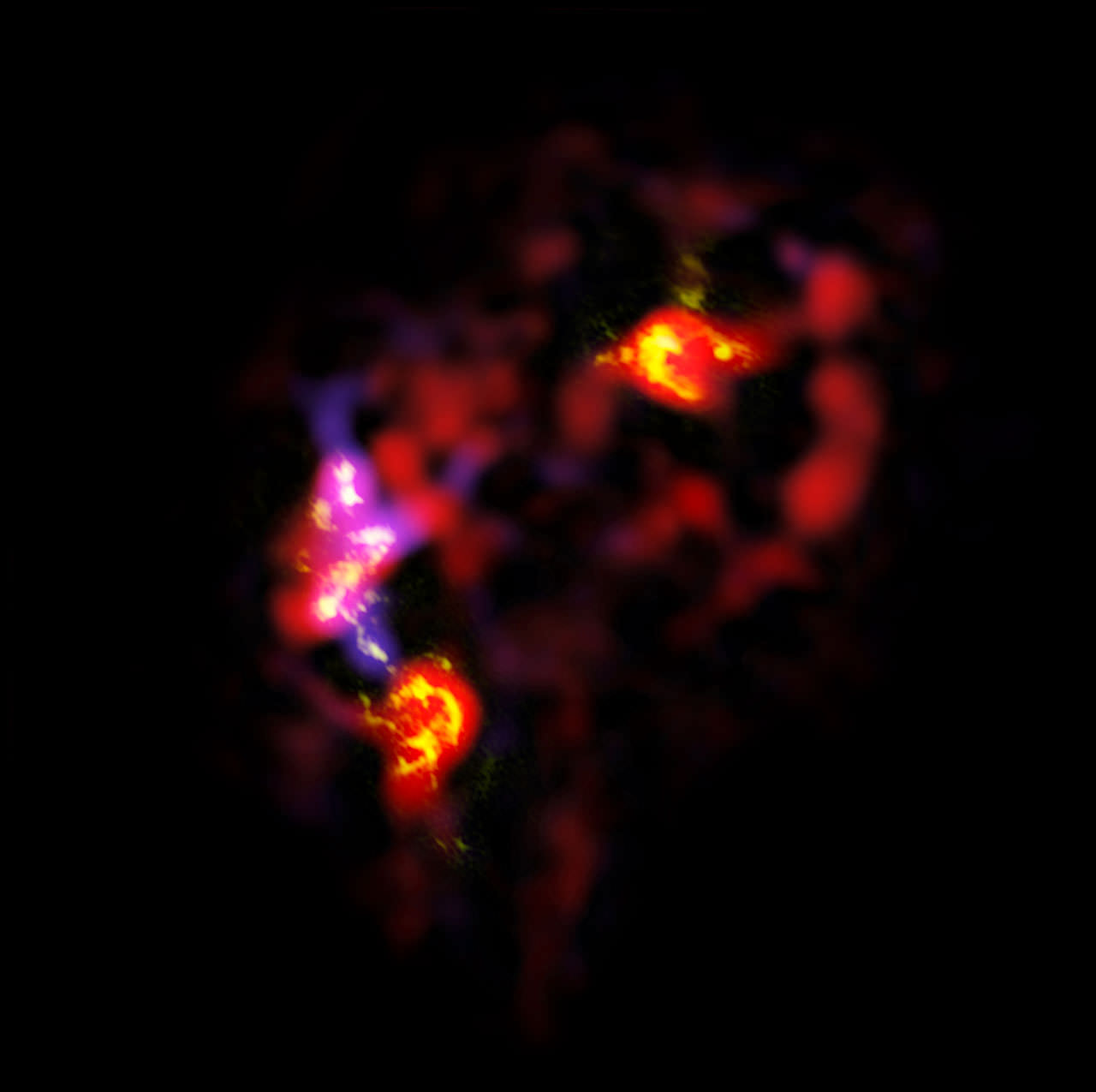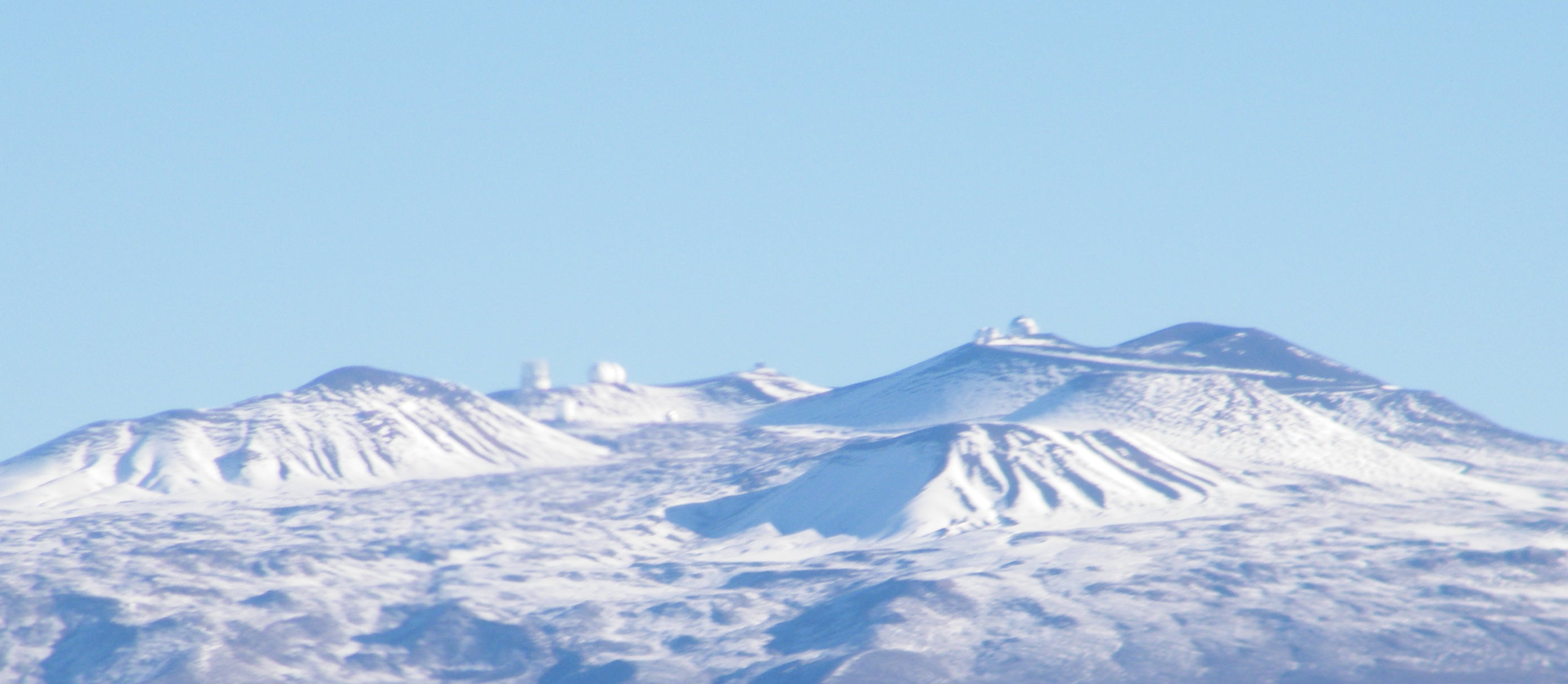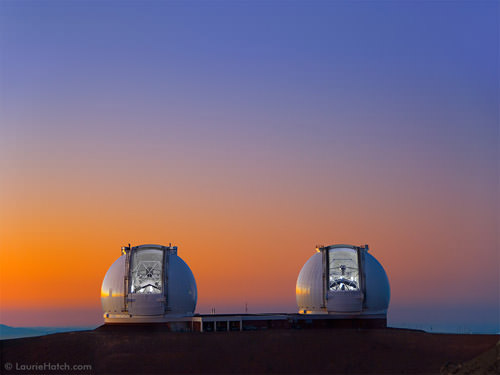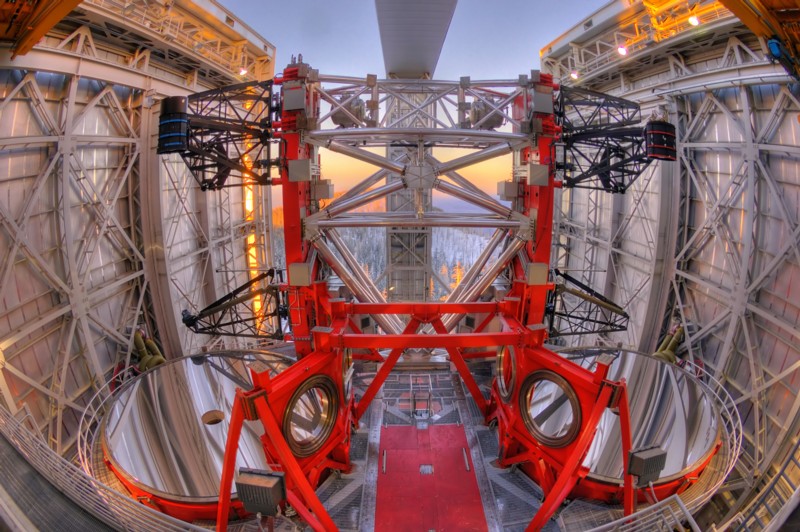The Atacama Desert of Chile has been called “an astronomer’s paradise,” with its stunningly dark, steady and transparent skies. It is home to some of the world’s leading telescopes, such as the Very Large Telescope (VLT) is located on Paranal. Babak Tafreshi, an astronomer, journalist and director of The World at Night (TWAN) is creating a series of timelapse videos from Paranal, and this is his latest. Just beautiful. You can see more at his Vimeo page.
ALMA Opens Her Eyes — With Stunning Results
There’s a new telescope in town that just opened up for business. It’s the long awaited ALMA, the Atacama Large Millimeter/submillimeter Array. Although it is still under construction, the science teams have released the first “early science” image, showing a pair of interacting galaxies called the Antenna Galaxies. ALMA’s view reveals a part of the Universe that just can’t be seen by visible-light and infrared telescopes. “From the formation of the first galaxies, stars, and planets to the merging of the first complex molecules, the science of ALMA is a vast spectrum of investigation,” said Tania Burchell, the ALMA Public Information Officer at the National Radio Astronomy Observatory, on today’s 365 Days of Astronomy podcast.
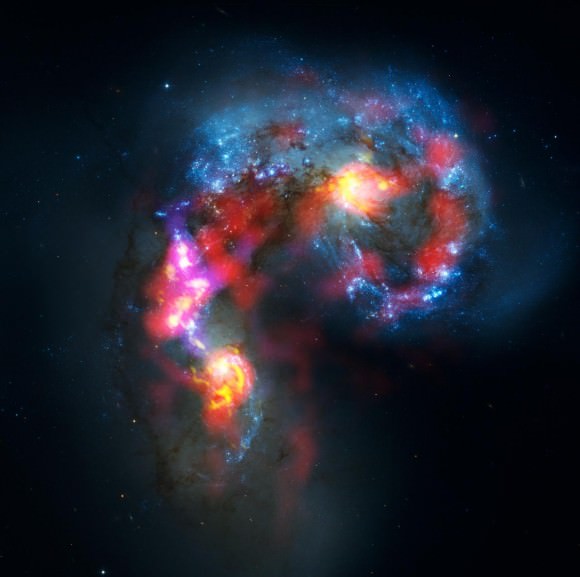
Currently, about one third of ALMA’s eventual 66 radio antennas are built and operational. The antennas are positioned just 125 meters apart on the Chajnantor plateau in northern Chile. This extremely dry and high desert sits over 5,000 meters (16,500) feet above sea level. This puts ALMA higher than any other telescope array on Earth. At this elevation, the temperatures hover around freezing all year round, and the air pressure is half that at sea level. Cold temperatures combined with little air is perfect for telescopes like ALMA.
“Even in this very early phase ALMA already outperforms all other submillimetre arrays,” said Tim de Zeeuw, Director General of ESO, the European partner in ALMA. “Reaching this milestone is a tribute to the impressive efforts of the many scientists and engineers in the ALMA partner regions around the world who made it possible.”
Historically, collecting, focusing, and imaging millimeter and submillimeter waves has been very tricky, Burchell said.
“These waves are so large that mirrors cannot focus them, and their frequencies are too high for off-the-shelf receiver technologies to process,” said said. “The warmth of a telescope’s own electronics is enough to ruin the weak cosmic mm signals that, by the time they reach us, sputter in at about a billionth of a billionth the power of a cell phone call. And as an added torment, humidity itself broadcasts at these frequencies, turning most skies into a glare of millemeter/submillimeter light.”
But ALMA is radically different from visible-light and infrared telescopes. It is an array of linked antennas acting as a single giant telescope, and it detects much longer wavelengths than those of visible light. Its images therefore look quite unlike more familiar pictures of the cosmos.
Compare images of the Antenna Galaxies, from ALMA and the Very Large Telescope:
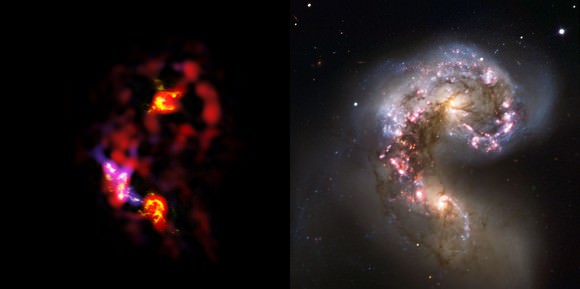
ALMA’s view reveals the clouds of dense cold gas from which new stars form. This is the best submillimeter-wavelength image ever made of the Antennae Galaxies.
Massive concentrations of gas are found not only in the hearts of the two galaxies but also in the chaotic region where they are colliding. Here, the total amount of gas is billions of times the mass of our Sun — a rich reservoir of material for future generations of stars. Observations like these open a new window on the submillimetre Universe and will be vital in helping us understand how galaxy collisions can trigger the birth of new stars. This is just one example of how ALMA reveals parts of the Universe that cannot be seen with visible-light and infrared telescopes.
Learn more about AlMA in this video:
Sources: ESO, 365 Days of Astronomy, NRAO
Astrophoto: Laser Lightning!
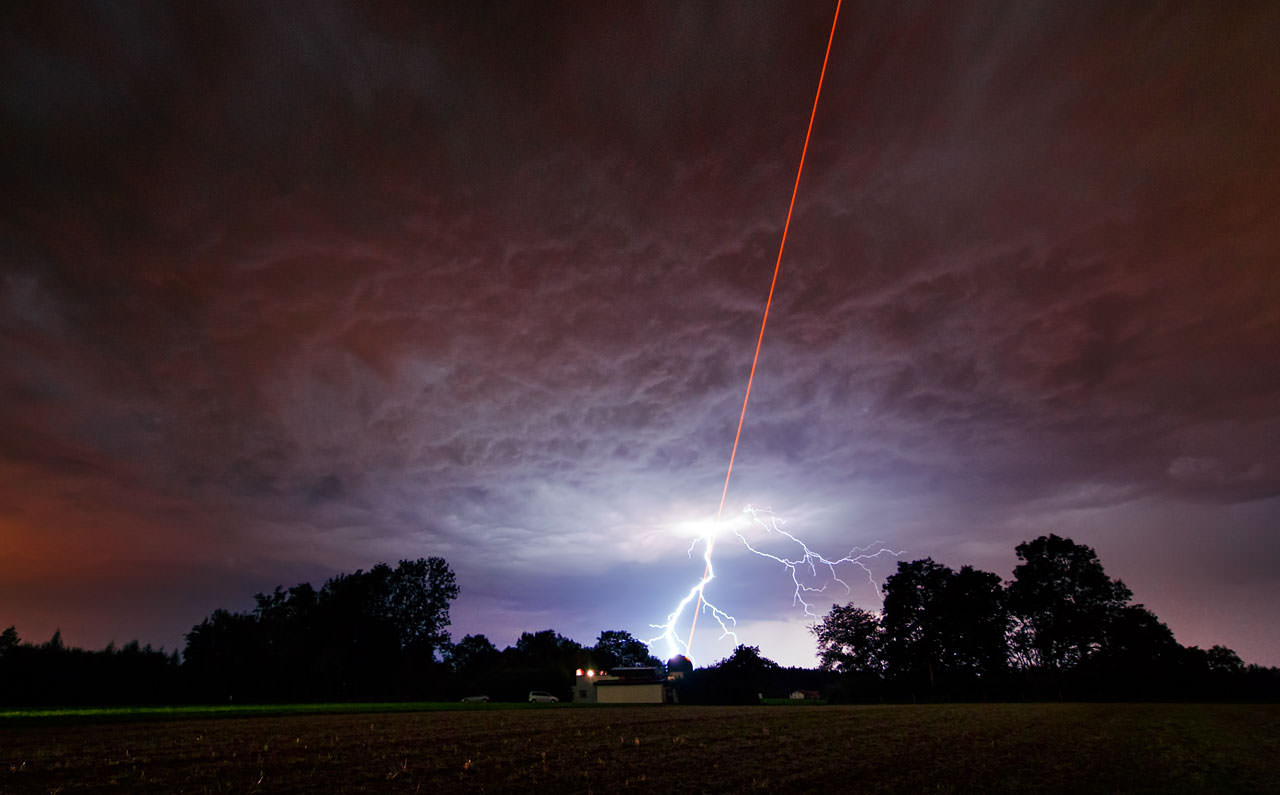
[/caption]
Yikes! This science-fiction-like scene was captured by Martin Kornmesser, a visual artist for the European Southern Observatory. Just as the ESO was testing a new laser guide star unit at the Allgäu Public Observatory in Ottobeuren, Germany, a thunderstorm erupted, throwing down bolts of lightning. The folks at ESO say this is a “very visual demonstration of why ESO’s telescopes are in Chile, and not in Germany.” Although the storm was still far from the observatory, the lightning appears to clash with the laser beam in the sky.
Laser guide stars are one type of adaptive optics astronomers use to correct for the blurring effect of the atmosphere in astronomical observations. The laser creates an artificial guide star 90 kilometers up in the Earth’s atmosphere. The laser in this photograph is a powerful one, with a 20-watt beam, but the power in a bolt of lightning peaks at a trillion watts — although it lasts for just a fraction of a second. Shortly after this picture was taken the storm reached the observatory, forcing operations to close for the night.
See more info at the ESO website.
Subaru 8-meter Telescope Damaged by Leaking Coolant

[/caption]
A “serious hardware incident” has shut down the Subaru Telescope indefinitely. A leak allowed orange-colored coolant to spill over the primary mirror and into the main camera, as well as into other instruments and the structure of the telescope. The damage is still being assessed. During the clean-up and recovery of equipment, nighttime observations have been suspended, as well as daytime summit tours of the telescope.
An announcement posted on the Subaru telescope website said that operators detected an error signal while shutting down the observation system at the end of the night shift during the early morning of Saturday, July 2, 2011.
When engineers arrived to assess the situation, they found extensive leakage of coolant (ethylene glycol) over most of the entire telescope. The leak originated from the “top unit” of the telescope, which is located at the center of the top ring and includes the Subaru Prime Focus Camera (Suprime-Cam) and auxiliary optics.
Although they promptly shut off the supply of coolant, a significant amount of leakage had already occurred, from the top unit itself down to the tertiary mirror, the primary mirror and some of its actuators, the Faint Object Camera and Spectrograph (FOCAS, a Cassegrain instrument) and its auxiliary optics, and the telescope floor.
The engineers attempted to clean up and remove as much coolant as possible. However, such areas as optics, control circuits, and the inside of Suprime-Cam and FOCAS were inaccessible during the initial clean-up.
The coolant consists of a mixture of water and ethylene glycol, a liquid commonly used in a vehicle’s radiator for cooling. The coolant is not corrosive and does not damage the primary mirror, which has a foundation of glass.
The Subaru Telescope is located on the Mauna Kea on the Big Island of Hawaii, with offices in the town of Hilo. The Subaru website said they will post updates on the status of the telescope and its recovery.
Source: Subaru Telescope website
Stunning, Colorful New Look at the Lagoon Nebula
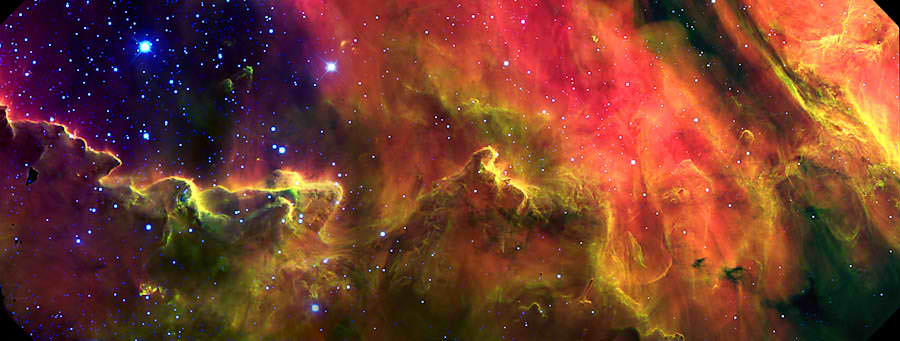
[/caption]
Wow, is this gorgeous or what?! Argentinean astronomers Julia Arias and Rodolfo Barbá used the Gemini South telescope in Chile to obtain this stunning new image, allowing us to dive right into part of the Lagoon Nebula (M8). This region of the Lagoon is sometimes called the “Southern Cliff” because it resembles a sharp drop-off. Beyond the cliff, light from a spattering of young background stars in the upper left of the image shines through the cloudscape.
The Lagoon nebula is located near the constellation Sagittarius in the southern Milky Way. Viewed through large amateur telescopes, it appears as a pale ghostly glow with a touch of pink. In this image, the astronomers used special filters to reveal characteristics of the gas clouds. The reds, blues and greens represent each of three data sets results in a very strong color differentiation. And so, this isn’t what the Lagoon Nebula would actually look like were we to travel there and take a look with our own eyes. Two narrow-band optical filters sensitive to hydrogen (red) and ionized sulfur (green) emission, and another that transmits far red light (blue). And so, for example, light from the far-red end of the spectrum, beyond what the eye can see, appears blue in this image.
Arias and Barbá obtained the imaging data to explore the evolutionary relationship between the newborn stars and what are known as Herbig-Haro (HH) objects. HH objects form when young stars eject large amounts of fast-moving gas as they grow. This gas plows into the surrounding nebula, producing bright shock fronts that glow as the gas is heated by friction and surrounding gas is excited by the high-energy radiation of nearby hot stars. The researchers found a dozen of these HH objects in the image, spanning sizes that range from a few thousand astronomical units (about a trillion kilometers) to 1.4 parsecs (4.6 light-years), i.e. a little greater than the distance from the Sun to its nearest neighbor Proxima Centauri.
For more info and a bigger version of this image, see the Gemini Telescope website.
Behind the Scenes at the Keck Observatory
[/caption]
For about 300 nights out of the year, Mauna Kea on the Big Island of Hawaii is one of the best places in the world for ground-based astronomy. At an elevation of 4,205 meters (13,796 ft), the summit sits above a large portion of the Earth’s atmosphere, and usually, the sky is clear, calm and dry. Indeed, 13 giant telescopes sit Mauna Kea’s summit, and they have made some of the biggest discoveries in astronomy. But for the remaining nights of the year, a variety of weather-related issues can keep astronomers from observing, and visitors from climbing to the summit to see those pristine skies for themselves, as well as being able to watch some of our biggest eyes on the skies action. Sometimes clouds, high winds or humidity might keep the telescope domes closed, other times snow can close the roads. On a recent visit to Hawaii, heavy snow kept the roads closed for three days and my long-planned trip to the top of Mauna Kea was, disappointingly, scrubbed. But I did get a great behind the scenes tour of the W. M. Keck Observatory headquarters in Waimea.
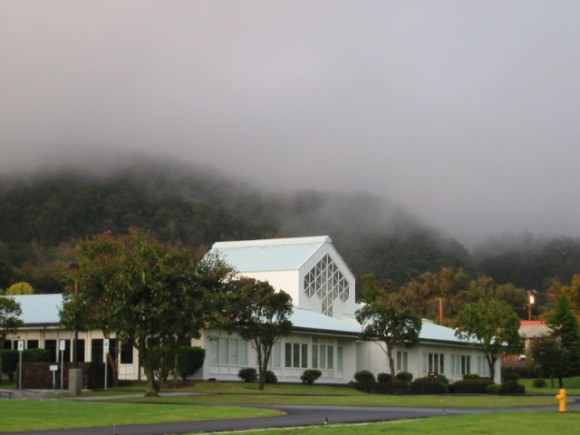
While the telescopes are up at at the top of the mountain, astronomers seldom actually work at the telescopes themselves. Instead they work out of remote operations offices at the headquarters in Waimea. There is an operations room for each of the twin 10-meter Keck telescopes: Remote Operations 1 works the Keck 1 telescope:
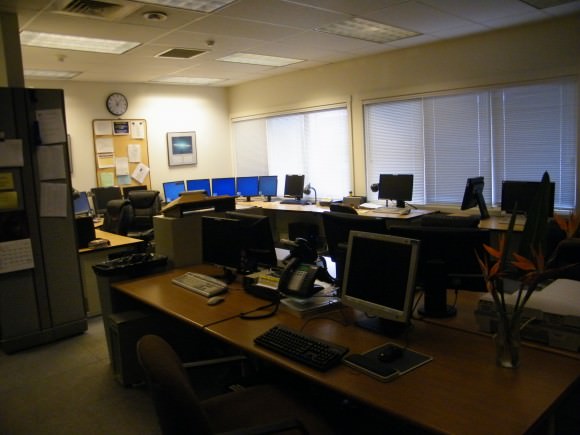
And Remote Operations 2 works Keck 2:
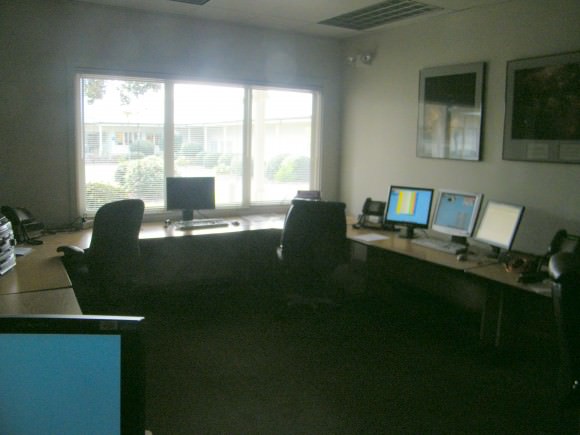
I arrived in the morning before any of the astronomers were there. “People who work for Keck help the visiting astronomers,” said Alexandra Starr, who works with the media and is a public information officer at the Keck headquarters. “Usually, the visiting astronomers start filtering in about 2 o’clock, and the people who work on the summit get things ready for what the astronomers want to observe. There is a camera for those down here to view how things are going for getting the telescope pointed exactly where they want it.”
But the domes on the telescope can’t be opened until the sun goes down.
“So, once they get everything set up, they go for an early dinner and then come back here and observe all night long,” said Starr. “We do have people working around the clock, however. For astronomers who have been here before, sometimes they don’t need a lot of assistance, but our support astronomers will help all the visiting astronomers get the best observing they can, and get the information they need while they are on the sky.”
About 125 people work full-time at Keck, of which two-thirds are local people from from Hawaii. With an annual operating budget of $11 million, the Observatory is one of the town’s largest employers.
At the headquarters, there are condos where the visiting astronomers can stay:
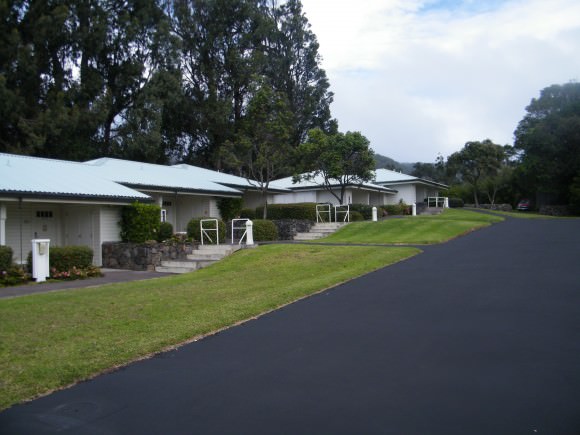
Most astronomers have just two nights for observing, and Starr said it can be up to a year and a half from when astronomers submit a proposal to use the Keck telescopes to when they actually get to observe. But sometimes, depending on the astronomer and what they are observing, they’ll get to return again fairly quickly when the weather doesn’t allow for observing.
“The past 2 nights we haven’t been observing, and those people are in town ready to go,” Starr said.

The backside of facilities includes the observatory’s own mechanics shop. “We have eight 4-wheel drive automobiles to get to the summit, and our own mechanic shop to keep them all in top shape,” Starr said.
The Keck Observatory’s headquarters in Waimea is open to visitors, and volunteer guides are available Tuesday through Friday from 10 a.m. to 2 p.m. to share information about Keck and the other Mauna Kea observatories. The visitor’s center also has a conference room for public lectures from visiting astronomers.
Inside are models and images of the twin 10-meter Keck telescopes:
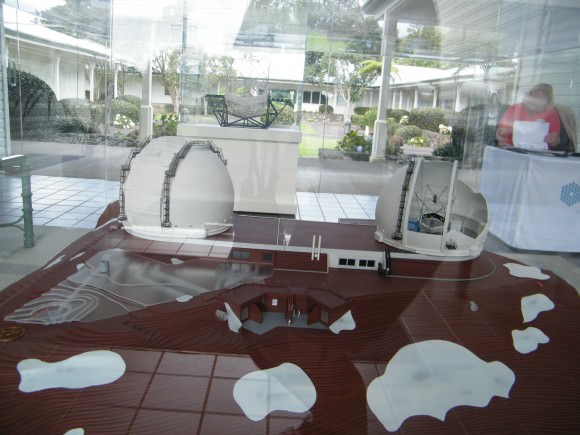
The twin Keck telescopes are the world’s largest optical and infrared telescopes. Each telescope stands eight stories tall, weighs 300 tons and operates with nanometer precision. The telescopes’ primary mirrors are 10 meters in diameter and are each composed of 36 hexagonal segments that work in concert as a single piece of reflective glass.
Outside in the visitor center courtyard is a grassy area that represents the size of just one of the hexagonal segments, which are 1.8 meters (6 ft) in diameter.
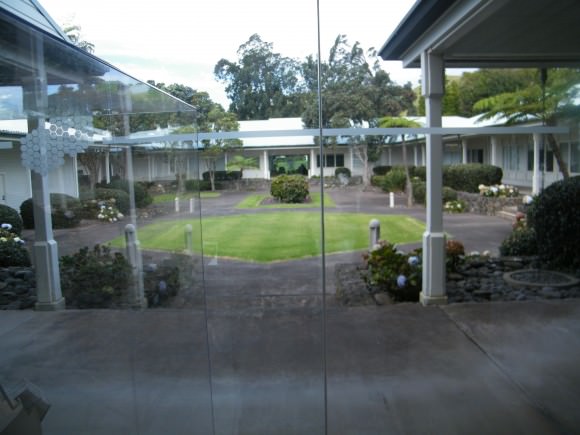
Each segment weighs .5 metric tons (880 pounds), and are three inches thick. They are made of a glass and ceramic composite called Zerodur. Zerodur itself is not reflective, so they are covered with a thin reflective layer of aluminum.
“While the telescope is actually working it is constantly fine tuning the position of the individual mirrors to make sure they are all in alignment,” said our tour guide Rosalind Redfield.
On the telescope, each segment’s figure is kept stable by a system of extremely rigid support structures and adjustable warping harnesses. During observing, a computer-controlled system of sensors and actuators adjusts the position of each segment – relative to the neighboring segment – to an accuracy of four nanometers, about the size of a few molecules, or about 1/25,000 the diameter of a human hair. This twice-per-second adjustment effectively counters the tug of gravity.
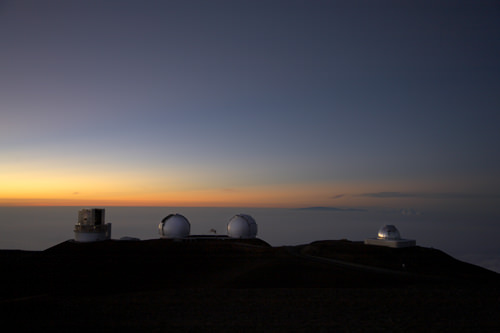
Up at the summit, (which I can only share pictures provided by the Keck Observatory) Redfield said it is like the other side of the Moon. “Absolutely nothing grows up there, the elevation is so high it is completely barren,” she said. “There is fine, sandy type dirt, and they don’t like people driving up there as it stirs up dust. The paved road only goes so far, and anyone driving at the summit creates enough dust that it can cause a problem, and people are only allowed to drive up if you have a four-wheel drive.”
The sun sets on Mauna Kea as the twin Kecks prepare for observing. Credit: Laurie Hatch/ W. M. Keck Observatory
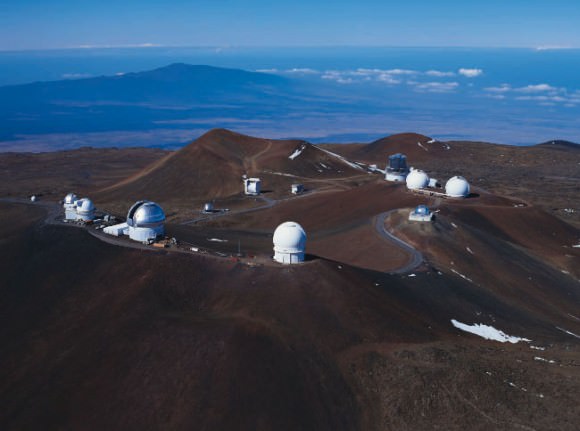
The two Keck telescopes and the 8.3 meter Subaru telescopes take the very top of the mountain. They are joined by the 8.1 Gemini North Telescope , the 0.6-m educational telescope, from the University of Hawaii at Hilo, a 2.2-m telescope University of Hawaii Institute for Astronomy, the 3 meter NASA Infrared Telescope Facility, the 3.6 meter Canada-France-Hawaii Telescope, the 3.8 meter UKIRT (United Kingdom Infrared Telescope), the 10.4 Caltech Submillimeter Observatory, the 15 meter James Clerk Maxwell Telescope, the 8X6 meter Submillimeter Array and the 25 meter Very Long Baseline Array.
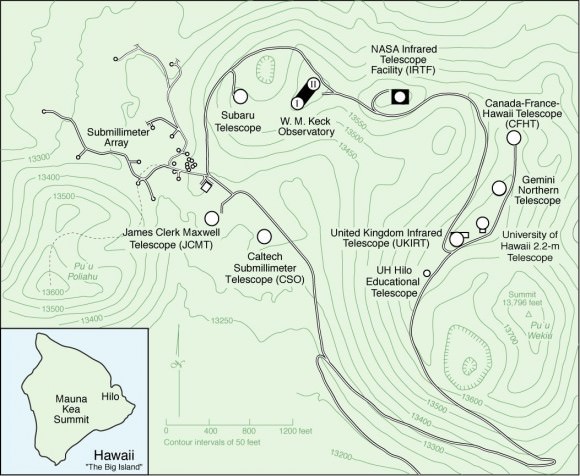
But, no climb to the summit for me — not this time anyway! I hope to return one day to Mauna Kea to see first-hand where science and nature come together to allow for continued discovery of our universe.

For more information about the Keck Observatory, see their website, and if you are in Hawaii or going to be visiting the Big Island, find information here on how you can visit the Observatory headquarters, or go to the summit.
New Record: Telescope Finds 19 Near-Earth Asteroids in One Night
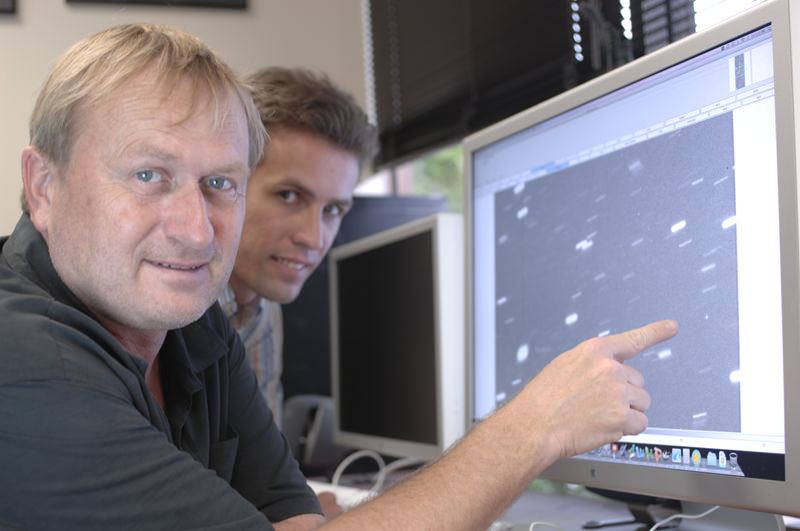
[/caption]
From a University of Hawaii Institute for Astronomy press release:
The Pan-STARRS PS1 telescope on Haleakala, Maui, discovered 19 near-Earth asteroids on the night of January 29, the most asteroids discovered by one telescope on a single night.
“This record number of discoveries shows that PS1 is the world’s most powerful telescope for this kind of study,” said Nick Kaiser, head of the Pan-STARRS project. “NASA and the U.S. Air Force Research Laboratory’s support of this project illustrates how seriously they are taking the threat from near-Earth asteroids.”
Pan-STARRS software engineer Larry Denneau spent that Saturday night in his University of Hawaii at Manoa office in Honolulu processing the PS1 data as it was transmitted from the telescope over the Internet. During the night and into the next afternoon, he and others came up with 30 possible new near-Earth asteroids.
Asteroids are discovered because they appear to move against the background of stars. To confirm asteroid discoveries, scientists must carefully re-observe them several times within 12-72 hours to define their orbits, otherwise they are likely to be “lost.”
Denneau and colleagues quickly sent their discoveries to the Minor Planet Center in Cambridge, Mass., which collects and disseminates data about asteroids and comets, so that other astronomers can re-observe the objects.
“Usually there are several mainland observatories that would help us confirm our discoveries, but widespread snowstorms there closed down many of them, so we had to scramble to confirm many of the discoveries ourselves,” noted Institute for Astronomy astronomer Richard Wainscoat.
Wainscoat, astronomer David Tholen, and graduate student Marco Micheli spent the next three nights searching for the asteroids using telescopes at Mauna Kea Observatories, Hawaii.
On Sunday night, they confirmed that two of the asteroids were near-Earth asteroids before snow on Mauna Kea forced the telescopes to close. On Monday night, they confirmed nine more before fog set in.
On Tuesday night, they searched for four, but found only one. After Tuesday, the remaining unconfirmed near-Earth asteroids had moved too far to be found again.
Telescopes in Arizona, Illinois, Italy, Japan, Kansas, New Mexico, and the United Kingdom, and the Faulkes Telescope on Haleakala also helped to confirm seven of the discoveries.
Two of the asteroids, it turns out, have orbits that come extremely close to Earth’s. There is no immediate danger, but a collision in the next century or so, while unlikely, cannot yet be ruled out. Astronomers will be paying close attention to these objects.
Another Must-Have Tool for Astronomers: A Shovel
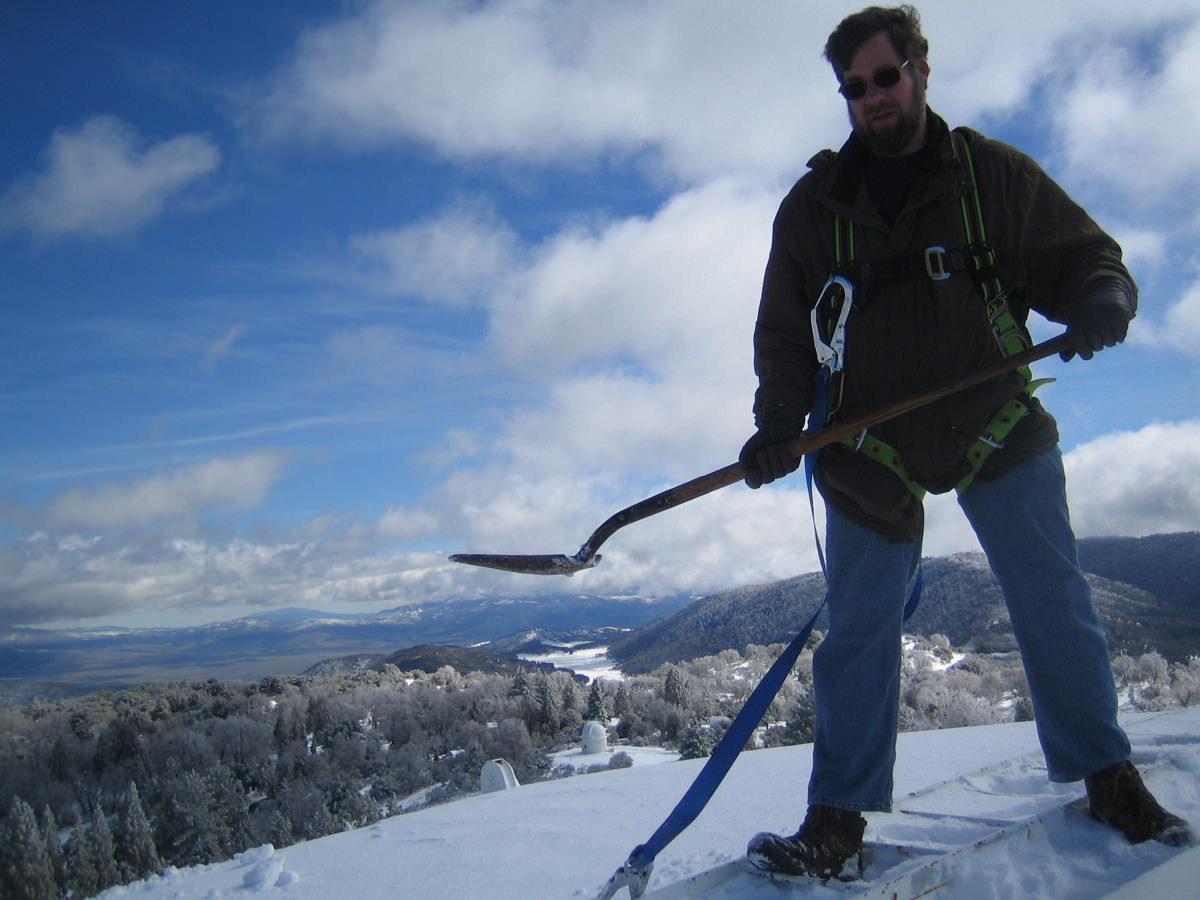
Ah, the glamorous life of an astronomer. Scott Kardel, public affairs coordinator for the Palomar Observatory, found himself on top of the dome of the 200-inch Hale Telescope — not observing, but shoveling. Snow. Palomar Mountain has been getting its share of the white stuff this winter, and this weekend close to a foot of snow fell in the area. All that snow can cause problems for using the telescope.
“The basic problem is this,” Kardel wrote on his blog, Palomar Skies. “If you open the dome with snow on the top, snow will fall in on the telescope and instrumentation. So a small crew, each secured with a safety harness, is sent up to remove the snow from the dome slit.”
Kardel posted a nice collection of scenic images from his foray on top of the snow-covered dome, adding that, “At Palomar Observatory every day is an adventure.”
[/caption]
First Images from Europe-Wide Giant Radio Observatory
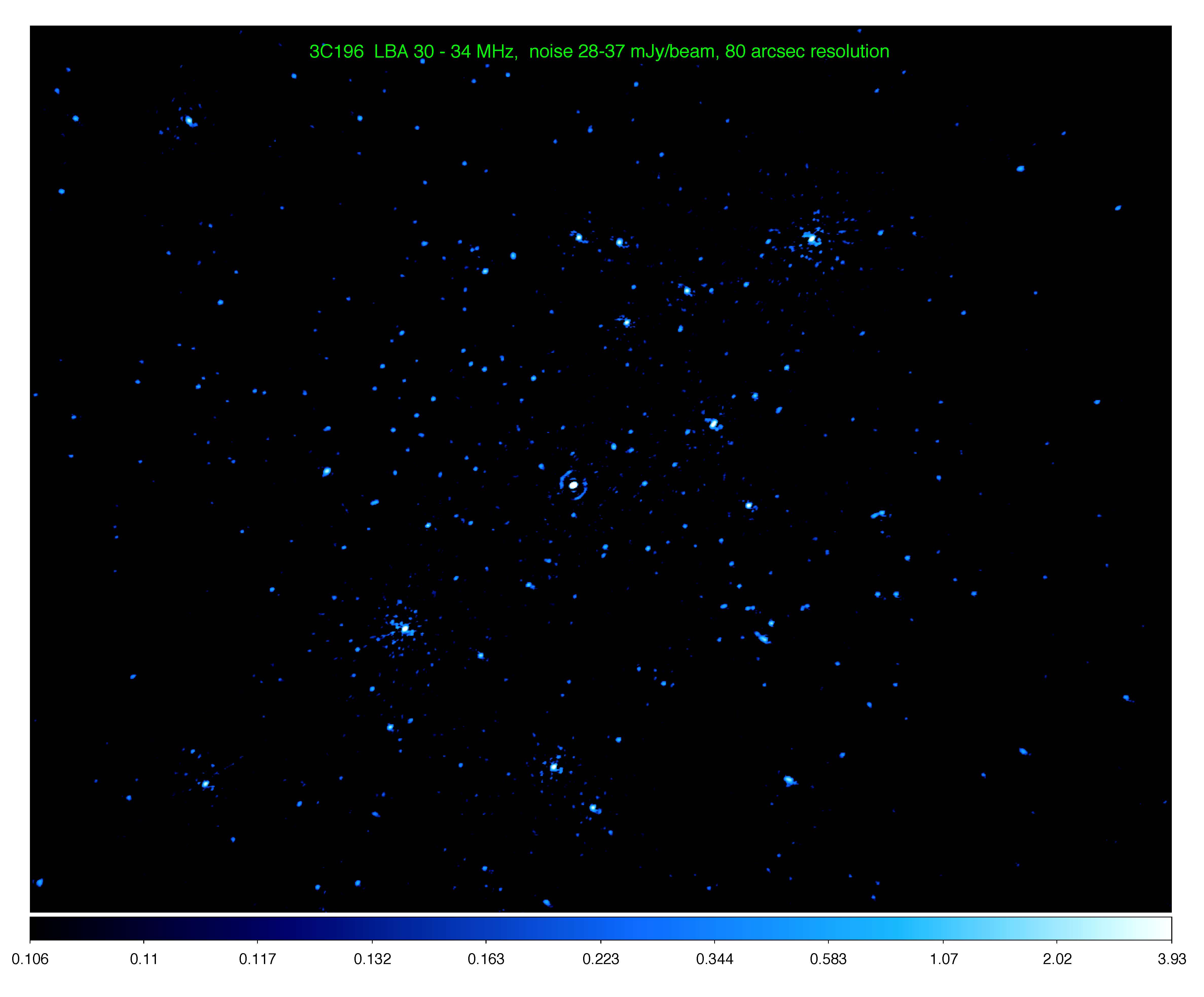
[/caption]
An array of radio telescopes has connected for the first time to its various locations across Europe, creating the largest telescope in the world at almost 1000 km wide. With the connection, the LOFAR telescope has delivered its first ‘radio pictures’. The images of the 3C196 quasar, a black hole in a distant galaxy, were taken in January 2011 by the International LOFAR Telescope (ILT). LOFAR is a network of radio telescopes designed to study the sky at the lowest radio frequencies accessible from the surface of the Earth with unprecedented resolution.
The UK based telescope at Chilbolton Observatory in Hampshire, was added to the network, and is the western most ‘telescope station’ in LOFAR.
“This is a very significant event for the LOFAR project and a great demonstration of what the UK is contributing”, said Derek McKay-Bukowski, STFC/SEPnet Project Manager at LOFAR Chilbolton. “The new images are three times sharper than has been previously possible with LOFAR. LOFAR works like a giant zoom lens – the more radio telescopes we add, and the further apart they are, the better the resolution and sensitivity. This means we can see smaller and fainter objects in the sky which will help us to answer exciting questions about cosmology and astrophysics.”
“This is fantastic”, said Professor Rob Fender, LOFAR-UK Leader from the University of Southampton. “Combining the LOFAR signals together is a very important milestone for this truly international facility. For the first time, the signals from LOFAR radio telescopes in the Netherlands, France, Germany and the United Kingdom have been successfully combined in the LOFAR BlueGene/P supercomputer in the Netherlands. The connection between the Chilbolton telescope and the supercomputer requires an internet speed of 10 gigabits per second – over 1000 times faster than the typical home broadband speeds,” said Professor Fender. “Getting that connection working without a hitch was a great feat requiring close collaboration between STFC, industry, universities around the country, and our international partners.”
“The images show a patch of the sky 15 degrees wide (as large as a thousand full moons) centred on the quasar 3C196”, said Dr Philip Best, Deputy LOFAR-UK leader from the University of Edinburgh. “In visible light, quasar 3C196 (even through the Hubble Space Telescope) is a single point. By adding the international stations like the one at Chilbolton we reveal two main bright spots. This shows how the International LOFAR Telescope will help us learn about distant objects in much more detail.”
LOFAR was designed and built by ASTRON in the Netherlands and is currently being extended across Europe. As well as deep cosmology, LOFAR will be used to monitor the Sun’s activity, study planets, and understand more about lightning and geomagnetic storms. LOFAR will also contribute to UK and European preparations for the planned global next generation radio telescope, the Square Kilometre Array (SKA).
Source: STFC
Large Binocular Telescope Achieves First Light
After eight and a half years in the making, the Large Binocular Telescope (LBT) is finally ready to begin operation. Yesterday, it unveiled its first image (shown above), the target of which was Beta Pictoris.
Continue reading “Large Binocular Telescope Achieves First Light”

